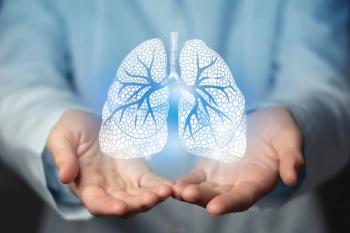
- June 2022 Immunization Guide for Pharmacists
From Pandemic to Endemic: Challenges and Opportunities for Pharmacists in Immunization Services
The COVID-19 pandemic came on quickly, disrupted our communities, and impacted the delivery of health care, especially through pharmacies.1 Pharmacists had to adjust their delivery of care to those who came into the pharmacy. In addition to utilizing new strat- egies for medication delivery, pharmacists had to develop processes and procedures to keep patients and staff safe.2 As COVID-19 vaccines became available, pharmacists were tasked with figuring out storage requirements, as well as appropriate handling and reconstitution of vaccines.3 New policies and procedures also were required to handle the large influx of people while maintaining social distancing and safety concerns.3 Simultaneously, pharmacists had to deal with vaccine misinformation and hesitancy issues, medication shortages and misuse problems, patient questions and concerns,4,5 and a constant barrage of information coming from professional organizations, social media, and the media. As tragic as the pandemic has been, it was also a time for pharmacists to innovate, create new care processes, collaborate with new community partners, and further develop their immunization knowledge and skills.
Pharmacy Challenges
Early during the pandemic, pharmacists focused on the safety of their staff and patients while attempting to maintain services.5 It was a challenge to minimize face-to-face interaction while ensuring that patient's pharmaceutical services were being met. Many pharmacies closed their lobbies to limit the individuals in the pharmacy to staff; however, this meant developing new processes for delivering not only medications, but also clinical services. Pharmacy staff also were navigating an increase in questions from patients, health care providers, and other community stakeholders about COVID-19, vaccines, testing, and nonapproved treatments. To stay abreast of the latest information, pharmacists were constantly reviewing new information released through drug information sources, press releases, and news reports with alarming speed.
Pharmacists and staff had to maintain social distancing, use appropriate personal protective equipment (PPE), and perform regular cleaning and disinfecting of the pharmacy. Furthermore, employees were screened daily for COVID-19 symptoms and received temperature checks. Developing new policies and procedures to address these new challenges became critical—for example, how to proceed when an employee tested positive for COVID-19.
The pandemic also exacerbated the already existing challenge of understaffing due to illness, technician shortages, and reductions in the labor market.6,7 As COVID-19 tests and vaccines became available and implemented in the practices, pharmacists and technicians were trying to handle being chronically understaffed and overworked.8 Because of the increased stresses at the workplace, pharmacy staff were experiencing burnout,9-11 and many were postponing other clinical services because of a lack of time due to the onslaught of COVID-19 vaccination services and testing being performed daily. Drug shortages and supply chain issues also became a concern causing inventory management challenges, quantity limits on certain medications, and complications around planning for future needs.12
Pharmacy staff were stretched even further with the need to effectively plan for remote vaccination clinics, in which large numbers of people were expected to attend. To plan and execute these remote clinics, pharmacy staff coordinated between multiple community stakeholders, including city governments, public safety, health and works departments, community organizations, transportation companies, churches, and community volunteers. In addition, pharmacy staff were required to arrange and ensure there was adequate PPE, vaccination supplies, and large enough spaces to host the clinic that allowed not only a place to safely vaccinate, but also a monitoring area that provided adequate social distancing for those who just received a vaccine. Promoting the vaccination clinic, enrolling, scheduling and managing people, and implementing people flow to promote social distancing required tremendous effort and planning.3
Pharmacy Innovation
Although the pandemic created multiple challenges for pharmacy staff, it also led to innovation, creativity, and the use of new technology. Because of the number of people requesting and needing COVID-19 vaccines, testing, or other clinical services, many pharmacies such as Towncrest Pharmacy, developed remote scheduling platforms (Figure).
These platforms allow people to schedule their services on their own by accessing the pharmacy’s website, identifying the service needed, and choosing an open time on the schedule that meets their availability.
In addition, some pharmacies created documentation platforms that enabled pharmacy staff to record their work related to COVID-19 vaccinations and batch upload this information into state registries. Other technologies implemented by pharmacies during the pandemic included point-of-care diagnostics for COVID-19 and influenza (eg, polymerase chain reaction and rapid antigen tests), telepharmacy consults, and clinical documentation via e-care plans.5,13-15
Pharmacists and pharmacy staff also developed creative ways to provide services to those who may be positive for COVID-19 while minimizing their own exposure. These changes included curbside-only delivery for prescriptions and testing and vaccination services. Designated parking spaces were identified and marked with signage that included the pharmacy phone number so that individuals could call to alert the pharmacy staff of their needs.
In addition, some pharmacies created makeshift clinical offices outside the pharmacy. At Towncrest Pharmacy, like many other pharmacies, some of these outdoor clinical offices are rented trailers that can be used during inclement weather (Photograph 1). Other pharmacies developed strategies to limit the flow and number of people inside the pharmacy at the same time. At Towncrest Pharmacy, a stoplight system was used to alert people when they could enter the pharmacy (Photograph 2). Additional equipment was also needed in some cases, such as ultracold freezers, additional office furniture and furniture supplies, signage, and vaccine supplies.
Pharmacy Technician Innovations
Many pharmacy practices utilize their pharmacy technicians to manage certain tasks and processes, such as synchronizing medication, dispensing, and triaging processes to free up pharmacists to provide clinical services16; however, during the COVID-19 pandemic, pharmacy technicians saw a further evolution of their roles in the pharmacy. Technicians have proven to be as effective as pharmacists in product verification,17 so practices in states that allowed technician product verification, were able to free up the pharmacists even more to provide clinical services. Utilizing well-trained technicians enables pharmacists to practice at their level of education and expertise, improving service delivery.
The pandemic also highlighted the role of pharmacy technicians as immunizers with the appropriate training.16 The availability of another group of providers able to vaccinate afforded a new level of flexibility to pharmacies to provide remote vaccination clinics without disrupting services in the pharmacy.
Information Challenges
During the pandemic, people were exposed to an onslaught of information about COVID-19 itself, as well as appropri- ate safety measures, testing, available vaccinations, and alternative treatments. People needed to sift through a high volume of information from a variety of sources, such as social media, which contributed to information overload, misinformation, and medical mistrust. This led to vaccine hesitancy among many individuals,18-20 and some sought alternative treatments for COVID-19.
The pandemic also impacted administration rates for other vaccines. The influenza vaccination rate increased whereas other vaccines, in the aggregate, decreased21,22; stay-at-home restrictions may have impacted this decrease. Anecdotally, some people were less willing to receive other vaccines, especially during the COVID-19 vaccine initial series, because of concerns over adverse events (AEs) associated with COVID-19 vaccines. Many people were knowledgeable of the more common AEs associated with COVID-19 vaccination. Data from the first 6 months of the US COVID-19 vaccination program indicated that most individuals experienced AEs during the first and second dose; however, most AEs were mild.23
Although some pharmacies saw an increase in willingness to receive other vaccines at the same time as a COVID-19 booster, there appears to have been a reduction in the rate of eligible people receiving boosters compared with the rate of those who received primary COVID-19 vaccinations.24
Furthermore, homebound, nonambulatory people presented unique challenges to pharmacies and the community. The complexities of the storage and special monitoring requirements for COVID-19 vaccines made it difficult to vaccinate these individuals effectively and efficiently. This population also posed increased challenges for the safe delivery of medications and services.
Lessons Learned: Improvements in Immunization Services
As we move from a pandemic to an endemic, many lessons have been learned to improve the delivery of immunization services at pharmacies. It is interesting to note that some of the creative solutions implemented during the pandemic have continued into the endemic. Curbside delivery of medications and services continues for some pharmacies post pandemic—because people appreciate the convenience. The use of remote scheduling platforms also proved beneficial not only to the pharmacy, but also to patients because they found they can schedule clinical services at their convenience. Integrating the review of state registries to proactively assess individuals’ vaccine status during the medication synchronization process provided an opportunity for discussions on vaccination needs. Utilizing an appointment-based model for delivery of care offered an efficient and effective way to provide vaccines. The sharing of clinical information between pharmacists and prescribers enhanced communication, assured that individuals were candidates for certain vaccines, and confirmed that immunization records were up-to-date.
New and improved care processes implemented during the pandemic also increased the visibility of pharmacies in the community—even among those individuals who normally filled prescriptions elsewhere. Providing enhanced clinical services created an opportunity to bring new people to a pharmacy practice. This provided pharmacy staff the ability to highlight their full array of clinical services beyond those related to COVID-19, such as pediatric vaccination services. As such, Towncrest Pharmacy experienced an increase in the number of pediatric individuals, which brought new families and new opportunities to expand into the pediatric market for other vaccines.
The COVID-19 pandemic also created new opportunities for pharmacists to collaborate with other community stakeholders who may not have worked with, or recognized, the value of pharmacies prior to the pandemic. There were many examples of pharmacies partnering with public health departments, emergency management agencies, social services, senior centers, and other community organizations to ensure that communities maximized their immunization opportunities. These organizations worked closely together to coordinate vaccination clinics, share resources, and manage community outreach strategies. For some community organizations, this was the first time that they worked with a pharmacy. It demonstrated the importance of a pharmacy to a community—not just as a place where prescriptions are filled, but also as a partner and a solution to a community’s collective health needs.
These relationships are just as important now for the provision of vaccination services, including remote clinics. The pandemic highlighted issues related to social determinants of health (SDOH) that were experienced by many community members. Pharmacies became part of the solution to address these issues by collaborating with key stakeholders, such as local social service departments, local health departments, health care providers, and other community-based organizations (CBOs).25,26 Incorporating assessments of SDOH as part of medication management services and referring people to an appropriate CBO became another new role for pharmacists.
The Future Role of Pharmacists and Vaccines Post Covid-19
The COVID-19 pandemic highlighted new vaccine technology: mRNA and viral vector. These technologies are effective, allow for new vaccines to be developed expeditiously, and offer advantages for rapidly emerging infectious diseases.27 Because of the misinformation that people are exposed to, pharmacists have a role to educate, counsel, and advise individuals and other health care providers about the efficacy and safety of new technology and the rigorous process new vaccines undergo before FDA approval.
The pandemic also highlighted the value of pharmacists. With most of the US population living within 5 miles of a pharmacy,28 pharmacists demonstrated they are key health care team members providing vaccine services, education, and other clinical services to their communities. Although the pandemic is evolving into an endemic, pharmacists continue to have an important role within their communities to ensure vaccine service delivery that improves the health of all people.
About The Author
Randy P. Mcdonough, PharmD, MS, BCGP, BCPS, FAPhA, is the chief executive officer at Towncrest Pharmacy Corp in Iowa City, Iowa and professor of pharmacy management and innovation at Loma Linda University School of Pharmacy.
References
1. Gregory PAM, Austin Z. COVID-19: how did community pharmacies get through the first wave?. Can Pharm J (Ott). 2020;153(5):243-251. doi:10.1177/1715163520945741
2. Hayden JC, Parkin R. The challenges of COVID-19 for community pharmacists and opportunities for the future. Ir J Psychol Med. 2020;37(3):198-203. doi:10.1017/ipm.2020.52
3. Ezeude GI, Glover KR, Nieves Santiago AA, Repella E, Tang E. Roadblocks and successes in preparing COVID-19 vaccination clinics: perspectives from pharmacy residents. Am J Health Syst Pharm. 2022;79(2):102-109. doi:10.1093/ajhp/zxab347
4. Marwitz KK. The pharmacist’s active role in combating COVID-19 medication misinformation. J Am Pharm Assoc (2003). 2021;61(2):e71-e74. doi:10.1016/j.japh.2020.10.022
5. PPantasri T. Expanded roles of community pharmacists in COVID-19: a scoping literature review. J Am Pharm Assoc (2003). 2022;62(3):649-657. doi:10.1016/j.japh.2021.12.013
6. Kaplan A, Springer S, Nguyen V. The latest worker shortage may affect your health: pharmacies don’t have enough staff to keep up with prescriptions. NBC news. December 28, 2021. Updated December 30, 2021. Accessed May 19, 2022. https://www.nbcnews.com/health/health-news/latest-worker- shortage-may-affect-health-pharmacies-dont-enough-staff-rcna8737
7. Occupational outlook handbook. pharmacists. US Bureau of Labor Statistics. Updated April 18, 2022. Accessed May 19, 2022. https://www.bls.gov/ooh/healthcare/pharmacists.htm#tab-1
8. COVID-19 demands significantly impact pharmacy operations. News release. American Pharmacists Association. January 18, 2022. Accessed May 19, 2022. https://www.pharmacist.com/APhA-Press-Releases/covid-19- demands-significantly-impact-pharmacy-operations
9. Johnston K, O’Reilly CL, Scholz B, Georgousopoulou EN, Mitchell I. Burnout and the challenges facing pharmacists during COVID-19: results of a national survey. Int J Clin Pharm. 2021;43(3):716-725. doi:10.1007/s11096-021-01268-5
10. Johnston K, O’Reilly CL, Cooper G, Mitchell I. The burden of COVID-19 on pharmacists. J Am Pharm Assoc (2003). 2021;61(2):e61-e64. doi:10.1016/j. japh.2020.10.013
11. Bakken BK, Winn AN. Clinician burnout during the COVID-19 pandemic before vaccine administration. J Am Pharm Assoc (2003). 2021;61(5):e71-e77. doi:10.1016/j.japh.2021.04.009
12. Burry LD, Barletta JF, Williamson D, et al. It takes a village...: contending with drug shortages during disasters. Chest. 2020;158(6):2414-2424. doi:10.1016/j.chest.2020.08.015
13. Aruru M, Truong HA, Clark S. Pharmacy Emergency Preparedness and Response (PEPR): a proposed framework for expanding pharmacy professionals’ roles and contributions to emergency preparedness and response during the COVID-19 pandemic and beyond. Res Social Adm Pharm. 2021;17(1):1967-1977. doi:10.1016/j.sapharm.2020.04.002
14. O’Connor SK, Healey P, Mark N, Adams JL, Robinson R, Nguyen E. Developing sustainable workflows for community pharmacy-based SARS- CoV-2 testing. J Am Pharm Assoc (2003). 2022;62(1):253-259. doi:10.1016/j. japh.2021.08.012
15. Unni EJ, Patel K, Beazer IR, Hung M. Telepharmacy during COVID-19: a scoping review. Pharmacy (Basel). 2021;9(4):183. doi:10.3390/pharmacy9040183
16. DeMarco M, Carter C, Houle SKD, Waite NM. The role of pharmacy technicians in vaccination services: a scoping review. J Am Pharm Assoc (2003). 2022;62(1):15-26.e11. doi:10.1016/j.japh.2021.09.016
17. Andreski M, Martin E, Brouner VV, Sorum S. Advancing community pharmacy practice - a technician product verification pilot to optimize care. Innov Pharm. 2020;11(2):1-9. doi:10.24926/iip.v11i2.2340
18. Su Z, Cheshmehzangi A, McDonnell D, da Veiga CP, Xiang YT. Mind the “vaccine fatigue.” Front Immunol. 2022;13:839433. doi:10.3389/fimmu.2022.839433
19. Troiano G, Nardi A. Vaccine hesitancy in the era of COVID-19. Public Health. 2021;194:245-251. doi:10.1016/j.puhe.2021.02.025
20.Dubé E, Laberge C, Guay M, Bramadat P, Roy R, Bettinger J. Vaccine hesitancy: an overview. Hum Vaccin Immunother. 2013;9(8):1763-1773. doi:10.4161/ hv.24657
21. Kuehn BM. Influenza vaccination increased during the COVID-19 pandemic. JAMA. 2021;326(24):2465. doi:10.1001/jama.2021.22390
22. Avalere. The COVID-19 pandemic: impact on US adolescent and adult vaccine utilization across markets. 2021. Accessed April 29, 2022. https://avalere.com/wp-content/uploads/2021/02/The-COVID-19- Pandemic_Impact-on-US-Adolescent-and-Adult-Vaccine-Utilization-Across-Markets_White-Paper.pdf
23. Rosenblum HG, Gee J, Liu R, et al. Safety of mRNA vaccines administered during the initial 6 months of the US COVID-19 vaccination programme: an observational study of reports to the Vaccine Adverse Event Reporting System and v-safe. Lancet Infect Dis. 2022;S1473-3099(22)00054-8. doi:10.1016/S1473-3099(22)00054-8
24.Carlsen A, Huang P, Levitt Z, Wood D. How are the COVID-19 vaccine and booster campaigns going in your state? NPR. April 28, 2022. Updated
May 23, 2022. Accessed May 24, 2022. https://www.npr.org/sections/health- shots/2021/01/28/960901166/how-is-the-covid-19-vaccination-campaign- going-in-your-state
25.Kiles TM, Borja-Hart N, Wofford BR, Renfro CP. Screening for social determinants of health in community pharmacy: identifying best practices, barriers, and strategies for success. J Am Pharm Assoc (2003). 2021;61(5):e59-e63. doi:10.1016/j.japh.2021.05.004
26.Livet M, Levitt JM, Lee A, Easter J. The pharmacist as a public health resource: Expanding telepharmacy services to address social determinants of health during the COVID-19 pandemic. Explor Res Clin Soc Pharm. 2021;2:100032. doi10.1016/j.rcsop.2021.100032.
27. Brisse M, Vrba SM, Kirk N, Liang Y, Ly H. Emerging Concepts and technologies in vaccine development. Front Immunol. 2020;11:583077. doi:10.3389/fimmu.2020.583077
28.Rubin R. Pharmacies partner with HHS to provide COVID-19 vac- cines. JAMA. 2020;324(24):2475. doi:10.1001/jama.2020.24651
Articles in this issue
Newsletter
Stay informed on drug updates, treatment guidelines, and pharmacy practice trends—subscribe to Pharmacy Times for weekly clinical insights.


















































































































































































































